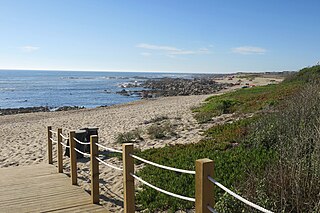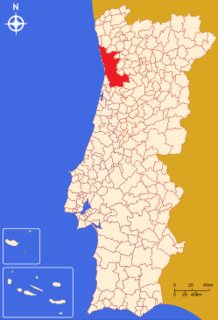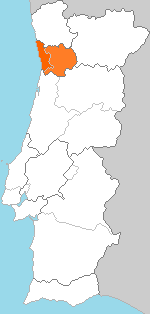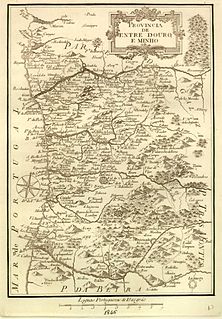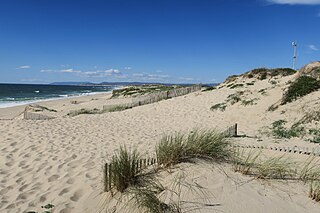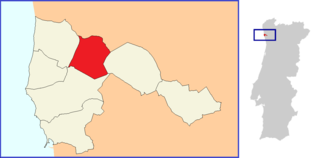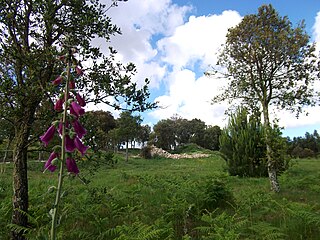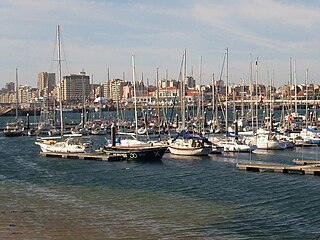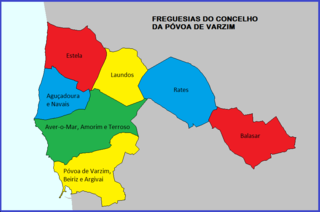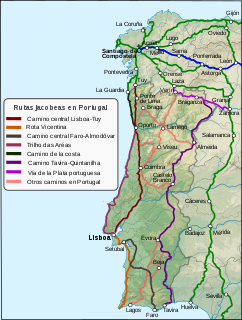
Póvoa de Varzim Coordinates: 41°22′59″N8°46′00″W / 41.38306°N 8.76667°W , with an area of 82.06 square kilometres, lies between the Cávado and Ave Rivers, or, from a wider perspective, halfway between the Minho and Douro Rivers on the northern coast of Portugal (also known as Costa Verde - Green Coast). Although in administrative reforms of 1936, the city was integrated in Douro Litoral (with which it shares cultural and historical traditions), the case for such an administrative integration is arguable, because Póvoa de Varzim is found in a transition region (in this case, between Douro Litoral and the old province of the Minho). It has characteristic Minho traditions, historical and demographic bounds with several towns and villages in the region, religiously it is part of Braga archdiocese, [1] and due to that it is perhaps preferable to recognize Póvoa as part of the old region, favouring more Entre-Douro-e-Minho, given its central geographic position in this region.
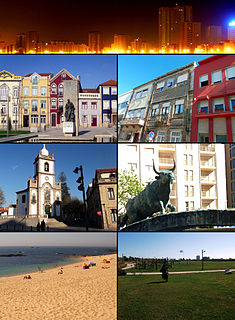
Póvoa de Varzim, also spelled Povoa de Varzim, is a Portuguese city in Northern Portugal and sub-region of Greater Porto. It sits in a sandy coastal plain, a cuspate foreland, halfway between the Minho and Douro rivers. In 2001, there were 63,470 inhabitants, with 42,396 living in the city proper. The city expanded, southwards, to Vila do Conde, and there are about 100,000 inhabitants in the urban area alone. It is the seventh-largest urban agglomeration in Portugal and the third largest in Northern Portugal.

A geographic coordinate system is a coordinate system that enables every location on Earth to be specified by a set of numbers, letters or symbols. The coordinates are often chosen such that one of the numbers represents a vertical position and two or three of the numbers represent a horizontal position; alternatively, a geographic position may be expressed in a combined three-dimensional Cartesian vector. A common choice of coordinates is latitude, longitude and elevation. To specify a location on a plane requires a map projection.

The Cávado River is a river located in northern Portugal.
Contents
The city is limited to the north by the municipality of Esposende, to the northeast by Barcelos, to the east by Vila Nova de Famalicão, and to the south by Vila do Conde. To the west, it has a shoreline on the Atlantic Ocean. [1]
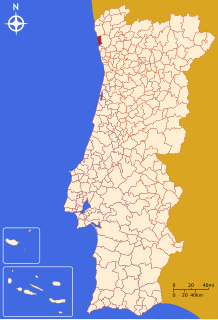
Esposende is a city and a municipality in Braga District in Portugal. The population in 2011 was 34,254, in an area of 95.41 km². The city itself had a population of 9,197 in 2001. It gained city status on 2 July 1993. The present Mayor is Fernando Couto Cepa, elected by the Social Democratic Party. The municipal holiday is August 19. It is located on the Portuguese Way of the Camino de Santiago.
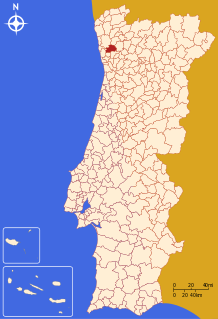
Vila Nova de Famalicão is a town and municipality in the district of Braga, in the north of Portugal. The population in 2011 was 133,832, in an area of 201.59 km².

Vila do Conde is a municipality in the Norte Region of Portugal. The population in 2011 was 79,533, in an area of 149.03 km². The urbanized area of Vila do Conde, which includes the parishes of Vila do Conde, Azurara and Árvore, represent 36,137 inhabitants. Vila do Conde is interlinked to the north with Póvoa de Varzim, forming a single urban agglomeration. The town is on the Portuguese Way of the Camino de Santiago.




